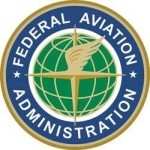Comments Open On Proposed Changes Based On 'Sleep Science'.
Flight Duty Time, Joint Responsibility, Training Emphasized

The FAA has released its NPRM for proposed rules dealing with pilot
fatigue. The 90-page document published in the Federal Register is
crafted to address fatigue among airline pilots. The sweeping new
proposal seeks to amend its existing flight, duty and rest
regulations by setting new standards for flight time, duty and rest
requirements, as well as fatigue training and mitigation.
“This proposal is a significant enhancement for aviation
safety,” said U.S. Transportation Secretary Ray LaHood in a
September 10th press statement. “Both pilots and passengers
will benefit from these proposed rules that will continue to ensure
the safety of our nation’s air transportation
system.”
Last year, Secretary LaHood and Administrator Babbitt
highlighted pilot fatigue as a top priority during the Airline
Safety Call to Action following the crash of Colgan Air 3407 in
February 2009. Administrator Babbitt launched an aggressive effort
to take advantage of the latest research on fatigue to create a new
pilot flight, duty and rest proposal.

The proposal, according the FAA, is compatible with provisions
in the Airline Safety and Federal Aviation Administration Extension
Act of 2010, which directs the FAA to issue a regulation no later
than August 1, 2011, to specify limitations on the hours of pilot
flight and duty time to address problems relating to pilot
fatigue.
The proposal also recognizes the growing similarities between
the types of operations and the universality of factors that lead
to fatigue in most individuals. Fatigue threatens aviation safety
because it increases the risk of pilot error that could lead to an
accident. The new requirements, if adopted, would eliminate the
current distinctions between domestic, flag and supplemental
operations. The proposal provides different requirements based on
the time of day, whether an individual is acclimated to a new time
zone, and the likelihood of being able to sleep under different
circumstances.
The proposal defines “flight duty” as the period of
time when a pilot reports for duty with the intention of flying an
aircraft, operating a simulator or operating a flight training
device. A pilot’s entire duty period can include both
“flight duty” and other tasks that do not involve
flight time, such as record keeping and ground training.
As stated in the NPRM itself, the FAA believes its current
regulations do not adequately address the risk of fatigue.
"Presently, flightcrew members are effectively allowed to work up
to 16 hours a day, with all of that time spent on tasks directly
related to aircraft operations. The regulatory requirement for nine
hours of rest is regularly reduced, with flightcrew members
spending rest time traveling to or from hotels and being provided
with little to no time to decompress."

"Additionally, certificate holders regularly exceed the
allowable duty periods by conducting flights under part 91 instead
of part 121, where the applicable flight, duty and rest
requirements are housed. As the NTSB repeatedly notes, the
FAA’s regulations do not account for the impact of circadian
rhythms on alertness, and the entire set of regulations is overly
complicated, with a different set of regulations for domestic
operations, flag operations, and supplemental operations."
The FAA proposes to set a nine-hour minimum opportunity for rest
prior to the duty period, a one-hour increase over the current
rules. The proposed rule would establish a new method for measuring
a pilot’s rest period, so that the pilot can have the chance
to receive at least eight hours of sleep during that rest period.
Cumulative fatigue would be addressed by placing weekly and 28-day
limits on the amount of time a pilot may be assigned any type of
duty.
Additionally, 28-day and annual limits would be placed on flight
time. Pilots would have to be given at least 30 consecutive hours
free from duty on a weekly basis, a 25 percent increase over the
current rules.
The NPRM goes on to state "fatigue mitigation is a joint
responsibility of the certificate holder and the flightcrew
member." The proposal says it recognizes the need to hold both
certificate holders and pilots responsible for ensuring flightcrew
members are "working a reasonable number of hours, getting
sufficient sleep, and not reporting for flight duty in an unsafe
condition."

While most of this will be likely settled in the context of
labor relations management, the NPRM notes that it is not fair to
place all the blame for pilot fatigue directly on the carriers.
It states, "Pilots who pick up extra hours,moonlight, report to
work when sick, commute irresponsibly, or simply choose not to take
advantage of the required rest periods are as culpable as carriers
who push the envelop by scheduling right up to the maximum duty
limits, assigning flightcrew members who have reached their flight
time limits additional flight duties under part 91, and exceeding
the maximum flight and duty limits by claiming reasonably
foreseeable circumstances are beyond their control."
And finally, along with recommended improvements in
carrier-specific fatigue risk management systems, the proposal
points out that "fatigue training" is not currently required under
any regulatory regime and that sleep experts note that many people
regularly underestimate their level of fatigue, "often to dangerous
levels."
With that in mind, the agency proposes to require fatigue
training for each person involved with scheduling aircraft and
crews, all crewmembers and management personnel. The FAA is
proposing to require five hours of initial training for all
newly-hired,covered employees prior to starting work in that
capacity and 2 hours of annual, recurrent training. This training
would be approved through the agency’s operations
specifications process.

The training curriculum would address general fatigue and
fatigue countermeasures along with the following subject areas such
as regulatory requirements for rest, the basics of fatigue, causes
of fatigue, effect of fatigue on performance, as well as the
"influence of lifestyle, including nutrition, exercise, and family
life on performance. The program would also address the
effects of commuting and operating through multiple time zones.
The Federal Register reports the 60-day public comment period
closes Monday,November 15, 2010. However, other sources, including
the FAA's Web site, indicate the comment period closes on November
13th, which is a Saturday.
 ANN's Daily Aero-Term (04.20.24): Light Gun
ANN's Daily Aero-Term (04.20.24): Light Gun Aero-News: Quote of the Day (04.20.24)
Aero-News: Quote of the Day (04.20.24) ANN's Daily Aero-Linx (04.21.24)
ANN's Daily Aero-Linx (04.21.24) Aero-News: Quote of the Day (04.21.24)
Aero-News: Quote of the Day (04.21.24) ANN's Daily Aero-Term (04.21.24): Aircraft Conflict
ANN's Daily Aero-Term (04.21.24): Aircraft Conflict







